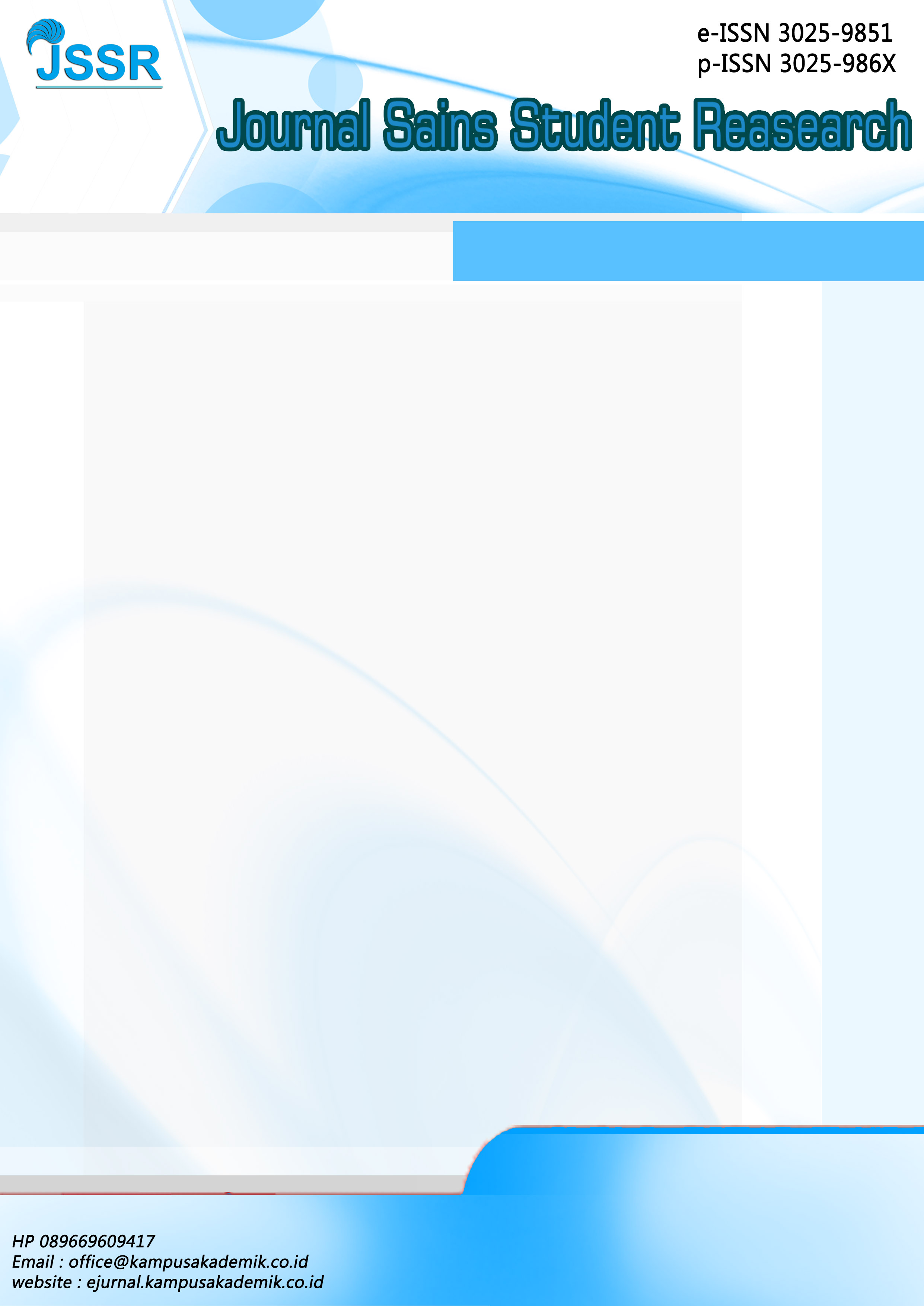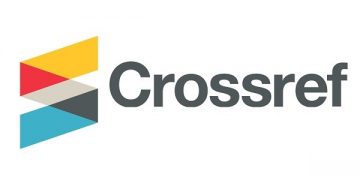IMPLEMENTASI METODE K-MEANS UNTUK PENGELOMPOKAN TOPIK KARYA ILMIAH (TUGAS AKHIR) PADA PRODI TEKNIK KOMPUTER POLITEKNIK BISNIS INDONESIA
DOI:
https://doi.org/10.61722/jssr.v2i5.2743Keywords:
K-Means Clustering, RapidMiner Accuracy, Robotics FieldAbstract
This research aims to overcome the problems faced by final year students of the Indonesian Business Polytechnic, especially the Computer Engineering Study Program. In this study, the implementation process of the K-Means Method that can be applied on the campus of the Indonesian Business Polytechnic, especially the Computer Engineering study program, is carried out to group final year students in taking the topic of the final project scientific paper based on their abilities in the field of courses taken. Using the K-means Method, the process of grouping final year students is carried out by utilizing course value data from the mapping of courses in the field of robotics, networks and artificial intelligence. The grouping is adjusted to the ability of students with student scores that will be used as a benchmark for grouping. The results of the rapidminer application test have the highest accuracy value of 93% because the percentage of conformity is close to the manual K-means calculation compared to other applications. The results of the cluster for the first cluster as many as 13 students were directed to take the topic of scientific work (final project) Artificial Intelligence, the second cluster as many as 12 students were directed to take the topic of Networking, and the third cluster as many as 5 students were directed to take the topic of robotics.
References
Buana, U., & Karawang, P. (2019). TechnoXplore Jurnal Ilmu Komputer & Teknologi Informasi ISSN : 2503-054X Vol 4 No: 1, April 2019. 4(1), 46–55.
Cv, P., & Menggunakan, W. (2023). Implementasi Algoritma K-Means Dalam Pengelompokan Data. 2(1), 188–196.
Ilmu, F., & Informasi, T. (2017). Karya Ilmiah.
K-means, M., Dwinavinta, D., & Nugraha, C. (2014). Klasterisasi Judul Buku dengan Menggunakan. 1–4.
Mining, P. D. (2016). Bab 2 landasan teori 2.1.
Mustari, K. A., Assiroj, P., Hartati, B., & Samuel, F. (2024). IMPLEMENTASI ATA MINING PADA INSTANSI PEMERINTAHAN (SYSTEMATIC LITERATURE REVIEW). 8(3), 3137–3142.
Patandianan, S. J., Putra, G. M., & Pakpahan, H. S. (2021). Implementasi Metode K-Means untuk Pengelompokkan Rekomendasi Tugas Akhir. 16(1).
Rafi, M. (2020). Algoritma K-Means untuk Pengelompokan Topik Skripsi Mahasiswa. 12(2), 121–129.
Sari, Y. R., Sudewa, A., Lestari, D. A., Jaya, T. I., Informasi, T., Budi, U., Raya, J. C., Utara, P., Selatan, J., & Jakarta, D. K. I. (2020). PENERAPAN ALGORITMA K- MEANS UNTUK CLUSTERING DATA KEMISKINAN PROVINSI BANTEN MENGGUNAKAN RAPIDMINER. 5(2), 192–198.
Studi, P., Informasi, T., Sains, F., Labuhanbatu, U., Nasution, M., Ritonga, A. A., Juledi, A. P., Informasi, S., Informasi, T., & Labuhanbatu, U. (2022). Implementasi rapidminer dalam mengklasifikasikan indeks demokrasi. 3, 99– 106.
Unsika, I. (2015). Penentuan peminatan tugas akhir mahasiswa teknik informatika unsika. 2(5), 9–16.
Wardani, N. W., & Selatan, K. (2021). Analisis Pesebaran Penularan Virus Corona Di Provinsi Jawa Tengah Menggunakan Metode K-Means Clustering. 8(1).
Widodo, A. M., & Anwar, N. (n.d.). Penggunaan WEKA sebagai alat bantu Data Mining.
Agustin, Hamdi. 2019. “Sistem Informasi Manajemen Dalam Perspektif Islam.” PT RajaGrafindo Persada (1): 218.
Alfriza Frisdayanti. 2019. “Peranan Brainware Dalam Sistem Informasi Manajemen Jurnal Ekonomi Dan Manajemen Sistem Informasi.” JEMSI 1(September): 60–69.
Almayda, Austin, and Sudin Saepudin. 2021. “Penerapan Data Mining K-Means Clustering Untuk Menglelompokkan Berbagai Jenis Merek Smartphone.” SISMATIK (Seminar Nasional Sistem Informasi dan Manajemen Informatika): 241–49.
Annur, Haditsah. 2019. “Penerapan Data Mining Menentukan Strategi Penjualan Variasi Mobil Menggunakan Metode K-Means Clustering.” Jurnal Informatika Upgris 5(1).
Ardiansyah, Ahmad Husain et al. 2020. “Penerapan Data Mining Menggunakan Metode Clustering Untuk Menentukan Status Provinsi Di Indonesia 2020.” Seminar Nasional Inovasi Teknologi 4(3): 329–33.
Aulia, Sabrina. 2021. “Klasterisasi Pola Penjualan Pestisida Menggunakan Metode K-Means Clustering (Studi Kasus Di Toko Juanda Tani Kecamatan Hutabayu Raja).” Djtechno: Jurnal Teknologi Informasi 1(1): 1–5.
Darmansah, Darmansah Darmansah, and Ni Wayan Wardani. 2021. “Analisis Pesebaran Penularan Virus Corona Di Provinsi Jawa Tengah Menggunakan Metode K-Means Clustering.” JATISI (Jurnal Teknik Informatika dan Sistem Informasi) 8(1): 105–17.
Enda Esyudha Pratama, Helen Sastypratiwi, and Yulianti. 2021. “Analisis Kecenderungan Informasi Terkait Covid-10 Berdasarkan Big Data Sosial Media Dengan Menggunakan Metode Data Mining.” Jurnal Informatika Polinema 7(2): 1–6.
Hakim, Lukman. 2019. Timur Laut Aksara | ISBN : 978-602-53849-2-9 Prinsip-Prinsip Dasar Sistem Informasi Manajemen: Dilengkapi Teori Dasar Sistem Informasi Manajemen Pendidikan. http://repository.uinjambi.ac.id/390/1/FINAL MATERI BUKU SIM.pdf.
Irawan, Yuda. 2019. “Penerapan Data Mining Untuk Evaluasi Data Penjualan Menggunakan Metode Clustering Dan Algoritma Hirarki Divisive.” Jtiulm 3(1): 13–20.
Josyaf, Aldo Fiotama, Erfanti Fatkhiyah, and Joko Triyono. 2021. “Rancangan Prototype Sistem Informasi Peminjaman Laptop Berbasis Web Pada Laboratorium Komputer.” Jurnal SCRIPT 9(2): 94–103.
Sangga Rasefta, Reza, and Shinta Esabella. 2020. “Sistem Informasi Akademik Smk Negeri 3 Sumbawa Besar Berbasis Web.” Jurnal Informatika, Teknologi dan Sains 2(1): 50–58.
Solichin, Achmad, and Khansa Khairunnisa. 2020. “Klasterisasi Persebaran Virus Corona (Covid-19) Di DKI Jakarta Menggunakan Metode K-Means.” Fountain of Informatics Journal 5(2): 52.
Trisnawan, Atriyan, Wahyudi Hariyanto, and Syahminan -. 2019. “Klasifikasi Beras Menggunakan Metode K-Means Clustering Berbasis Pengolahan Citra Digital.” RAINSTEK : Jurnal Terapan Sains & Teknologi 1(1): 16–24.
Utomo, Dito Putro, and Bister Purba. 2019. “Penerapan Datamining Pada Data Gempa Bumi Terhadap Potensi Tsunami Di Indonesia.” Prosiding Seminar Nasional Riset Information Science (SENARIS) 1(September): 846.
Wijoyo, Hadion. 2021. Angewandte Chemie International Edition, 6(11), 951–952. Sistem Informai Manajemen.
Downloads
Published
Issue
Section
License
Copyright (c) 2024 JOURNAL SAINS STUDENT RESEARCH

This work is licensed under a Creative Commons Attribution-ShareAlike 4.0 International License.













